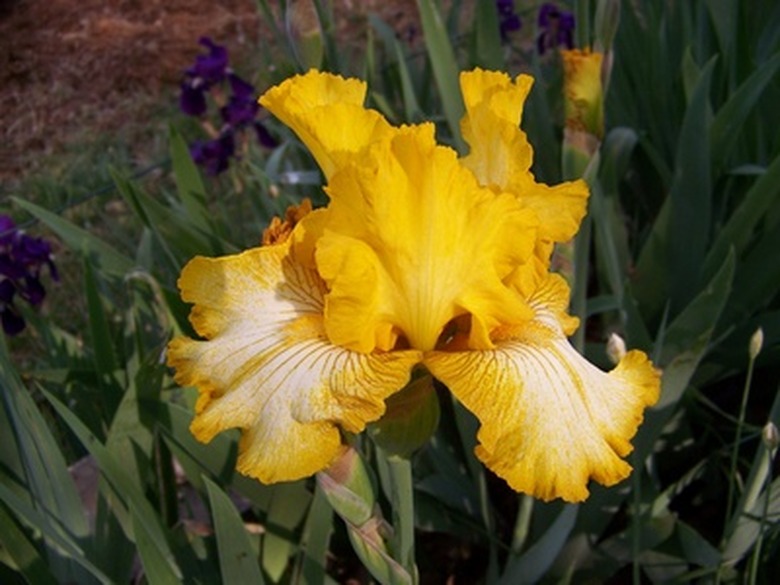Planting Iris Bulbs In Spring
Things Needed
- Garden tiller
- Hand tools (spade, rake, hoe, hand trowel)
- Compost or manure
- 5-10-10 fertilizer
Irises bloom in early summer adding a splash of color to perennial beds before many other flowers are in bloom. Grown from underground rhizomes, often incorrectly referred to as bulbs, irises are typically planted in late summer or early fall. However, rhizomes planted in the spring often bloom in middle to late summer and return in the spring. Regardless of when they are planted, preparing the soil properly in a sunny location is necessary.
Step 1
Prepare the soil in a sunny, well-drained area. Till the soil with a garden tiller to a depth of 8 to 10 inches. Remove roots, rocks and other debris from the soil. Break up clods of soil with the blade of the hoe or spade.
- Irises bloom in early summer adding a splash of color to perennial beds before many other flowers are in bloom.
Step 2
Spread a 2- to 3-inch layer of well-rotted manure or peat moss over the top of the soil. Work the organic matter into the soil with a garden tiller or hand tools. Rake the area smooth.
Step 3
Apply 2 lbs. of 5-10-10 fertilizer per 100 square feet of gardening area. Mix fertilizer in with the existing soil to avoid injury to roots. Fertilizer should not touch roots or rhizomes.
- Spread a 2- to 3-inch layer of well-rotted manure or peat moss over the top of the soil.
Step 4
Dig a shallow hole, 2 to 4 inches deep, that is large enough to accommodate the rhizome. Mound the soil in a ridge in the center of the hole.
Step 5
Place the iris rhizome on top of the ridge of soil, with roots extending over the sides of the ridge and pointing downward. Position the rhizome so that the top of the rhizome rests just below the surface of the soil. Fill in around the rhizome with soil and firm down with your hands.
Step 6
Water thoroughly to moisten the soil to the root level. Keep the soil moist until new growth appears. Reduce watering to once a week, saturating the soil to the root level each time you water.
- Dig a shallow hole, 2 to 4 inches deep, that is large enough to accommodate the rhizome.
- Place the iris rhizome on top of the ridge of soil, with roots extending over the sides of the ridge and pointing downward.
Tip
Irises thrive in soil with a pH between 6.0 and 7.0.
